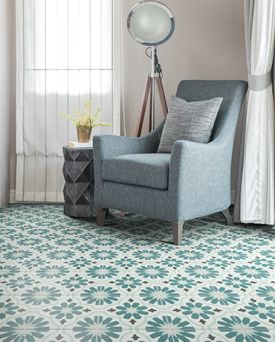
Encaustic tiles have become a timeless classic and deservedly so. They bring pattern and colour in a huge array of design styles, from Moorish-inspired tiles to modern geometrics. They also provide a really practical surface, being hardwearing and easy to keep clean. But care does need to be taken when installing these tiles. They’re vulnerable to staining, so it’s really important to seal them correctly – and sufficiently – both before and after grouting.
Why protection is really important
Traditional encaustics have a concrete base. Their colour and pattern come from pigments which are mixed and poured into a mould, on top of the concrete. Because porosity can differ from one design to another, there’s no golden rule in terms of the amount of sealant that should be used. Therefore, to ensure adequate protection, coats of sealer should be applied to the tile with one hour between each application to the point of saturation. This will occur when a layer of sealer is still visible on the surface of the tile 20 minutes after application. To remove excess sealer, you can either work the treatment off with a microfibre cloth or leave it to dry naturally.
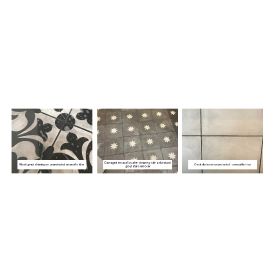
Note. Always ensure that tiles are clean and dust-free before you apply any sealer. This will prevent any residue from becoming trapped between the tile and the treatment, which could compromise the performance of the sealer.
Different sealer options
There are two LTP sealer options for encaustic tiles:
LTP Colour Intensifier which increases colour vibrancy, without detracting from the tile’s naturally muted appearance. Or, for a completely natural look, LTP Mattstone. Both treatments are offered in a water-based or spirit-based formulation.
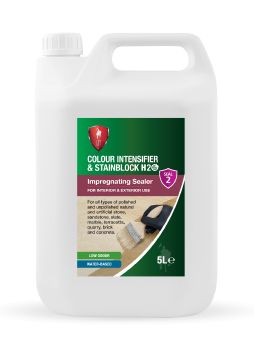
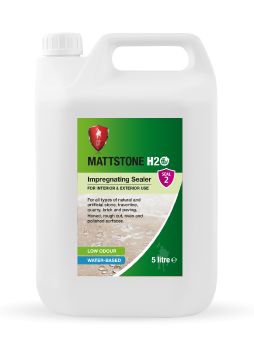
The sealer should be applied both before and after grouting. Post installation only, wax can be applied as an alternative to the sealer to create a traditional antique finish which can easily be topped up. We recommend LTP Ironwax Satin or, for a more shiny appearance, Ironwax Gloss.
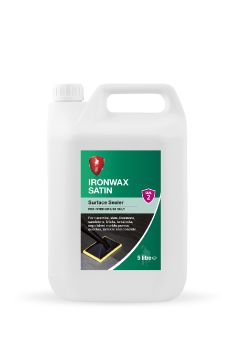
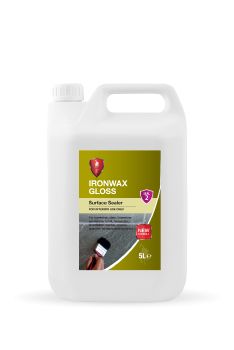
For directions on sealer application, please see our Encaustic Guide.
Common stains and how to remove them
Staining from detergent or acid-spill:
Encaustic tiles are sensitive to acid. When acid comes into contact with the patterned surface, it can bleach out darker colours on untreated tiles. Common culprits are acid-based cleaners and acidic liquids like lemon juice, vinegar and wine. To remove staining, we recommend application of LTP Cement, Grout & Salt Residue Remover onto the individual tile, up to the joint only. This will slightly etch the surface and even out the appearance. The tile should then be re-treated. Method and treatment time will vary, depending on severity of staining, as outlined in our Technical Datasheet.
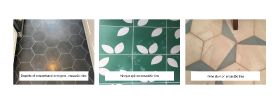
Hard-water staining:
Constant exposure to hard water can cause an encaustic tile to effloresce. Here, we recommend cleaning with LTP Grout Haze and Limescale Remover. Apply liberally to the surface, work in with an emulsifying pad, rinse and then top up the protection.

Dirt & Grime:
To deep clean encaustic tiles, we recommend LTP Grimex. Here, the dilution and application method can be adjusted depending on the degree of residue build-up. Generally, a 1:10 dilution is sufficient. The cleaner is applied to the tiles and left for 5-10 minutes, before a little water is added and the surface and joints agitated with a black pad. Residue is then removed with a sponge and the surface rinsed and sponged again. Please see our Technical Datasheet for more information.
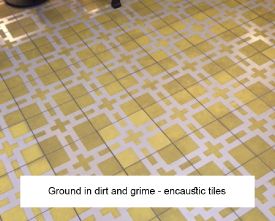
Over-applied sealer:
If too much sealer is applied to a tile, and not removed, it can cause shiny patches. Care should be taken when tackling this problem and abrasive cleaners and strong alkalines avoided, as they commonly cause pigments to ‘bleed out’. Instead, use a non-caustic solution like LTP Solvex. Apply to the whole tile, leave for 15 minutes and then agitate with a white emulsifying pad before removing residue and rinsing.
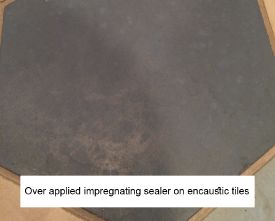
Ongoing maintenance:
To clean encaustic tiles going forwards, always use a pH neutral cleaner. General household cleaners, which tend to be either acidic or alkaline in nature, aren’t suitable; they will, over time, etch the surface and damage any sealer applied. Even many ‘eco’ cleaners are too harsh; whilst they contain natural acids and alkalines, they are not pH neutral. We recommend either LTP Floorshine if the tiles have been finished with wax or LTP Waxwash if an impregnator has been applied. Floorshine is a particularly good option, as it will clean the tile and also top up protection.
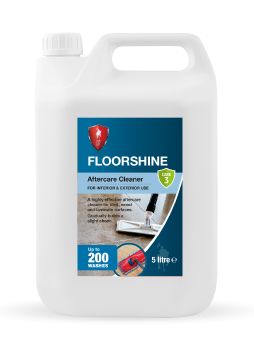

For more detailed advice on encaustic tile maintenance and protection, see our Guides. Bespoke guides can also be written on request.

For further information and demos, browse LTP TV on YouTube or contact the LTP team direct on tel. 01823 666213 or email [email protected]



